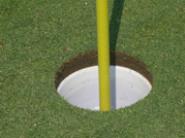Source:
Technical igK Dpt.
15 October 2013
Estimating Nitrogen Requirements
As was seen in the article on the Planning Curve, estimating nitrogen requirements is a parameter obtained directly with this method.

To understand it, two factors must be clear:
1. We are dealing with an estimate of total nitrogen requirements and not just nitrogen fertilization, because there is an indirect contribution factor (to the extent that it is not applied intentionally).
For example, indirect nitrogen contribution occurs when irrigating with recycled water and its amount can only be determined with a laboratory analysis. Another contribution occurs when the mowing clippings are not collected (turfgrass leaves are 4% to 5% nitrogen).
2. The estimate depends on the nitrogen extraction coefficient or factor that we define. A nitrogen extraction coefficient can be assigned to the crops based on the estimated grain or fodder production.
We have opted to base on the recommendations and studies of the Crop and Soil Sciences Department of Michigan State University (a worldwide reference in Turfgrass Management) for a high quality and maintenance intense surface, that is, submitted to heavy stress (very low mowing height, frequent mowing with clippings collection, exposed to heavy traffic, etc).
The extraction coefficient is set for a maximum potential growth rate of 100%, defined as KUFN / 100% GP.
Under these conditions, Cool Season Grasses needed 0.5 pounds of nitrogen per 1000 square feet in the months of maximum growth. This is equal to 24.41 Kg N/ha in the international system.
Warm Season Grasses needed 1.5 pounds of nitrogen per 1000 square feet, equivalent to 73.24 kg N/ha in the IS.
It could be said that these extraction coefficients approach their maximum as regards maintenance frequency, although it can be greatly reduced on less demanding surfaces, with smaller budgets, ornamental lawns and recreational gardens. Thus we obtain reduced costs and environmental impact.
As will be shown further down, with experience, the greenkeeper's knowledge, and a suitable fertilization program, these extraction coefficients could be reduced by up to 40%, depending on the purspose of the turfgrass surface.